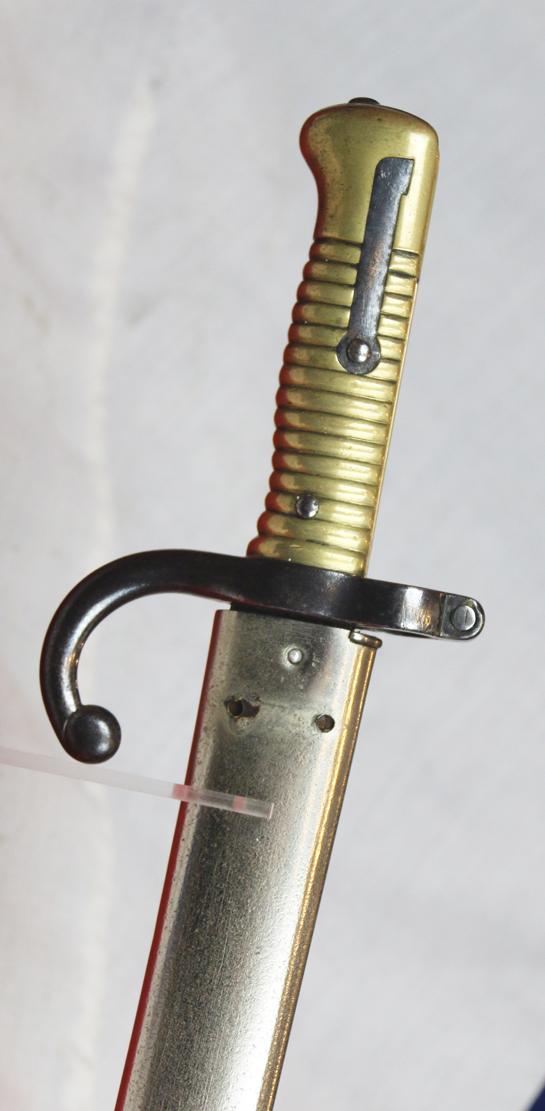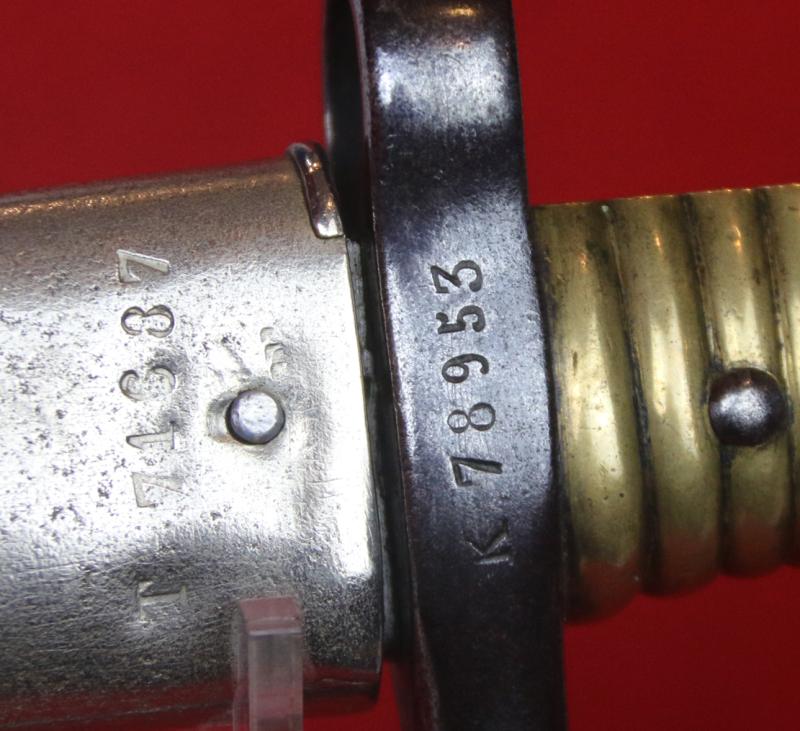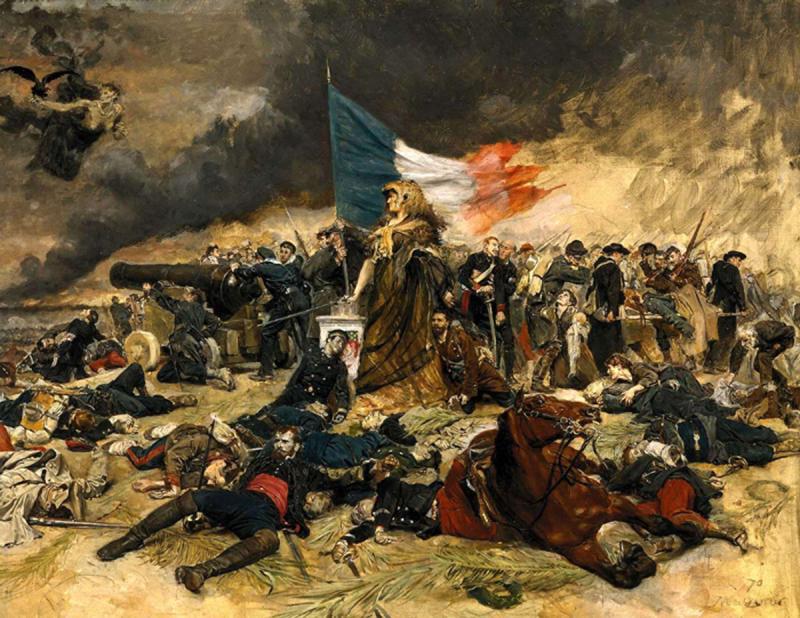A Superb 19th Century French Chassepot M1866 Sword Bayonet, Franco Prussian War Issue, Manufactured at the Armoury of StEtienne 1870
Stunning example, with very good steel and brass,
Its inventor was, Antoine Alphonse Chassepot, and it became the French service weapon in 1866. It was first used at the battlefield at Mentana, November 1867, where it inflicted severe losses on Garibaldi's troops. The event was reported at the French Parliament: "Les Chassepots ont fait merveille!", {The Chassepots did marvelous execution !} In the Franco-Prussian War (1870-1871) it proved greatly superior to the German Dreyse needle gun, outranging it by 2 to 1. Although it was a smaller caliber but the chassepot ammunition had more gunpowder and thus faster muzzle velocity. The Chassepots were responsible for most of the Prussian and other German casualties during the conflict. This is the most widely copied of all the sword bayonets. Many countries - including the United States, Egypt, Belgium, and Argentina - have manufactured or used very similar bayonets. The French model was designed to fit on the French Model 1866 Chassepot Rifled Infantry Musket (the musket was revolutionary in itself). It was manufactured from 1866 to about 1874 and was replaced by the French Model 1874 "Gras" Bayonet.
The bayonets are brass-hilted The crossguard is iron (steel) and has a screw-type tightening arrangement on the muzzle-ring. The lower quillon is a hooked "blade-breaker" type.
The blade is steel, single-edged, fullered (both sides), with a re-curved or "yataghan-shape." The blades marked on the back-edge (opposite the cutting edge) with the arsenal, month, and year of manufacture; this is done in engraved cursive fashion
Arsenals encountered may be such as Chatellerault, Mutzig, St. Etienne, Paris-Oudry, Tulle, and perhaps Steyr (not confirmed on the 1866). The French wars during the life-span of this bayonet were: French Intervention in Mexico (1861-1867);
Franco-Prussian War (July 19, 1870 - May 10, 1871)
French Indo-China (1873-1874, 1882-1883);
Sino-French War (1883-1885);
Madagascar Wars (1883-1885, 1895);
1st Mandingo-French War (1883-1886);
1st Dahomeyan-French War (1889-1990);
2nd Dahomeyan-French War (1892-1894);
Franco-Siamese War of (1893)
2nd Mandingo-French War (1894-1895);
Conquest of Chad (1897-1914);
3rd Mandingo-French War (1898);
Moroccan War (1907-1912);
The Wadai War (1909-1911);
World War I (early).
These bayonets were widely copied and used by many countries - including the United States, Belgium, and Germany. Many of the actual French-marked bayonets can be found with German manufactured blades. It is believed some of these were used during the American Civil War when many European arsenals were emptied of their surplus arms.
These bayonets are the French Model 1866 "Chassepot" Bayonet.
The crossguard are iron (steel) and with a "cock's comb" muzzle-ring finial. The lower quillon is a hooked "blade-breaker" type.
The blade is steel, single-edged, fullered (both sides), with a re-curved or "yataghan-shape." One blade is marked on the back-edge (opposite the cutting edge) with the arsenal, month, and year of manufacture; this is done in engraved cursive fashion.
Code: 25133








